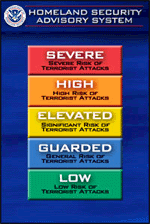Reviewed by Steven "Modeldad" Eisenman

Mushroom's
"PZL.23" Book
is available online from Squadron.com
 This
is the first in Mushroom Model Magazine’s Orange series. According to MMM, the
Orange series combines the Yellow Series’ focus on aircraft with the Red Series’
focus on history; hence Orange. But, with MMM’s Blue, Yellow, Orange and Red
Series, their catalog is beginning to remind me of the U.S Department of
Homeland Security’s threat alert color chart. All that is needed would be a
Green Series to complete the picture.
This
is the first in Mushroom Model Magazine’s Orange series. According to MMM, the
Orange series combines the Yellow Series’ focus on aircraft with the Red Series’
focus on history; hence Orange. But, with MMM’s Blue, Yellow, Orange and Red
Series, their catalog is beginning to remind me of the U.S Department of
Homeland Security’s threat alert color chart. All that is needed would be a
Green Series to complete the picture.
Having observed the absurd, let me now turn to this very nice monograph. It is
very similar in organization to their volume on the PZL P.11c. We first learn
of the development of the PZL.23 Karas from its origins as a domestic
replacement for French built aircraft used in light bomber and reconnaissance
units. (According to MMM’s web site, Karas means a
Crucian Carp)
What I find unusually fascinating is that the cost of the aircraft is set out:
Total cost 230,000 zloty each, with the three machine guns alone costing 15,000
zloty. If only we knew what the zloty was worth in U.S Dollars or Pounds
Sterling back in 1935. But for all that money (it was a lot, I presume), the
first version of the Karas was a dismal failure and was deemed effectively
useless as a combat aircraft. It then underwent a re-engineering which produced
the final combat ready version, even if it did spray oil over the windshield.
The book then goes on to describe the export variant, the PZL.43. It differed
primarily in that it used a twin row radial engine which required that the cowl
mounted machine guns had to be mounted on the outside in their own nacelles,
rather than firing between the cylinders. By the outbreak of the war, Bulgaria
was the only customer for this model. The Bulgarians called it “Chayka” or
Seagull; a bit nicer sounding than Carp. By the way, the PZL.43 cost 236,000
zloty.
The heart of this volume is the operational history. We get a brief overview of
the pre-war use. Once again we are reminded that Poland was involved in
territorial conflicts with Czechoslovakia and Lithuania. We also find that the
Karas engaged in reconnaissance incursions over German territory. With the
invasion of Poland, the monograph turns its focus to each bomber and
reconnaissance unit that operated the Karas. The operational descriptions are
quite straight forward, lacking drama. But, one can imagine the drama that
occurred.
At
the conclusion of the operational use section, the book has a single page on the
evaluation of the aircraft. Basically, the Karas suffered an 86% loss rate, the
highest of all Polish aircraft, and that without Polish air superiority, the
Karas was virtually useless.
Before going on to the technical sections, the monograph briefly covers the
Karas in foreign service. Bulgaria used the PZL.43 export version, and Rumania
used the PZL.23 which were “evacuated” to Rumania. It is not clear if this
means Polish pilots fled to Rumania with their aircraft, or they were given to
Rumania by the Germans.
The technical section is small, but in my opinion, nicely done. There are
numerous line drawings of the various models of the Karas. There are also
numerous pictures from the original manuals for the aircraft and engines. All
this will be quite useful for those wanting to build the expected 1/48 Karas
kit.
Finally, there are the profiles. Of course they focus primarily on the Polish
Air Force aircraft, and, also of course, only one color is dominant –
Khaki-Brown. Additionally there are profiles of the Rumanian PZL.23s and the
more colorful Bulgarian PZL.43s.
I
don’t want to finish this review without remarking on the photographs that fill
this volume. I am always surprised that so many pictures of reasonable quality
survived. Of course many of them, regretfully, are of damaged and captured
aircraft.
As
most now know, I have a particular fondness for the air forces other than those
of the five major combatants (USA, UK, USSR, Germany and Japan) of the Second
World war and for the less than glamorous aircraft that they often used. For
those that share my interest, and even for those who do not, I recommend this
volume. It is a very good introduction to the Karas and its operational
history.
Recommended.
A
selection of the color profiles in this book may be seen on the MMP web site at
http://www.mmpbooks.biz/books/books-orange.html
All Mushroom Model
Publications books are
available direct from
the publishers,
who now accept credit cards (Visa, MC, Amex, Switch)
North American
distributors are Squadron/MMD, Australian distributors are Platypus
Publications. In Europe, the books are available from any good bookshop (via our
UK distributors, Orca). Contact MMP direct in case of difficulties.
Thanks to
Roger at Mushroom Model
Magazine for
the sample.
Review Copyright © 2004 by
Steven "Modeldad" Eisenman
Page Created 06 October, 2004
Last updated 06 October, 2004
Back to HyperScale
Main Page
Back to Reviews
Page
Home | What's
New | Features
| Gallery |
Reviews | Reference
| Forum
| Search